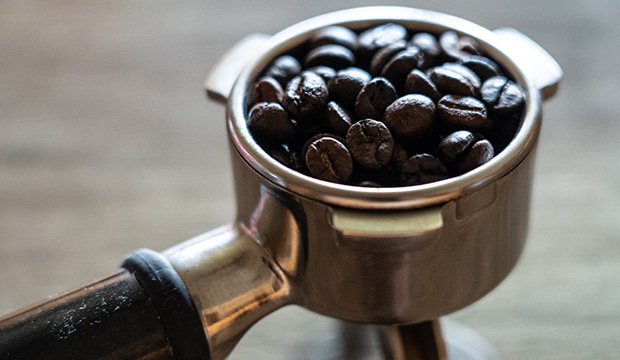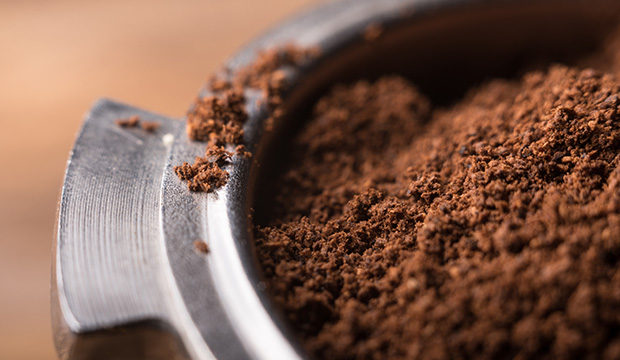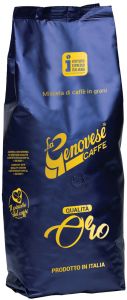
3-5 Workdays Article No. 10223
Aroma(s) : Chocolaty, Nutty
Article No. 10223
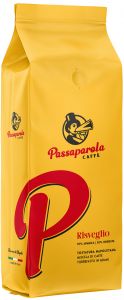
3-5 Workdays Article No. 13970
Aroma(s) : Chocolaty, Malty
Article No. 13970

20-23
Workdays
Extended delivery time
Please note that if you purchase this item, you should expect a longer delivery time for your entire order. We cannot ship other items in your order, that are in stock, ahead of time.
Article No. 12004
Aroma(s) : Chocolaty, Caramel, Nutty
Article No. 12004

3-5 Workdays Article No. 10885
Article No. 10885
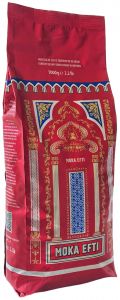
3-5 Workdays Article No. 10154
Aroma(s) : Chocolaty, Cloves, Cinnamon, Nutty, Fruity
Article No. 10154
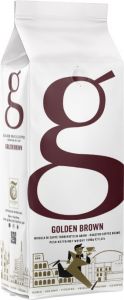
3-5 Workdays Article No. 10743
Aroma(s) : Nutty
Article No. 10743
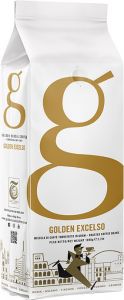
3-5 Workdays Article No. 10742
Aroma(s) : Chocolaty, Fruity
Article No. 10742
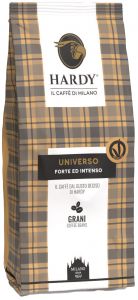
3-5 Workdays Article No. 1926
Aroma(s) : Chocolaty, Nutty
Article No. 1926
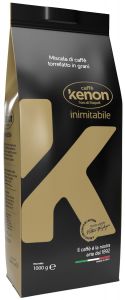
3-5 Workdays Article No. 11003
Aroma(s) : Chocolaty, Malty
Article No. 11003

3-5 Workdays Article No. 1927
Aroma(s) : Nutty, Malty
Article No. 1927

3-5 Workdays Article No. 10738
Aroma(s) : Nutty, Fruity
Article No. 10738
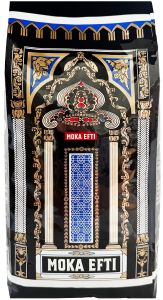
3-5 Workdays Article No. 10978
Aroma(s) : Chocolaty, Nutty
Article No. 10978
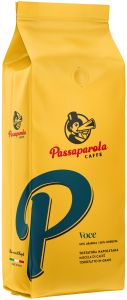
3-5 Workdays Article No. 18550
Aroma(s) : Chocolaty, Malty
Article No. 18550

3-5 Workdays Article No. 10898
Aroma(s) : Chocolaty, Floral, Fruity
Article No. 10898
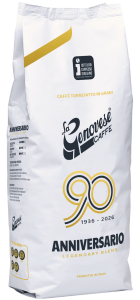
3-5 Workdays Article No. 11043
Aroma(s) : Chocolaty, Floral, Fruity
Article No. 11043
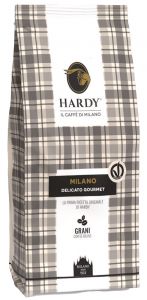
3-5 Workdays Article No. 1928
Aroma(s) : Chocolaty, Floral
Article No. 1928

3-5 Workdays Article No. 10509
Aroma(s) : Chocolaty, Nutty
Article No. 10509
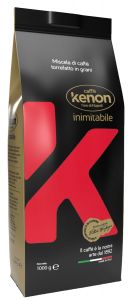
3-5 Workdays Article No. 11000
Aroma(s) : Chocolaty, Malty
Article No. 11000
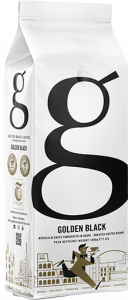
3-5 Workdays Article No. 10740
Aroma(s) : Chocolaty, Almond, Floral, Fruity
Article No. 10740

3-5 Workdays Article No. 11109
Article No. 11109
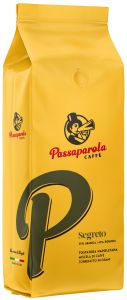
3-5 Workdays Article No. 15210
Aroma(s) : Chocolaty, Malty
Article No. 15210
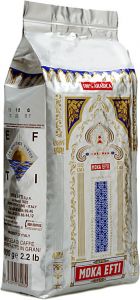
3-5 Workdays Article No. 10102
Aroma(s) : Nutty, Fruity
Article No. 10102
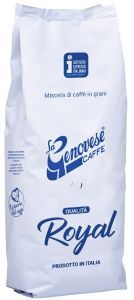
3-5 Workdays Article No. 10222
Aroma(s) : Chocolaty, Nutty
Article No. 10222

3-5 Workdays Article No. 1722
Aroma(s) : Chocolaty, Nutty
Article No. 1722
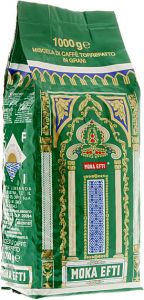
3-5 Workdays Article No. 10104
Aroma(s) : Nutty, Malty
Article No. 10104

3-5 Workdays Article No. 1237
Aroma(s) : Chocolaty, Floral, Fruity
Article No. 1237

3-5 Workdays Article No. 1167
Aroma(s) : Chocolaty, Floral, Fruity
Article No. 1167
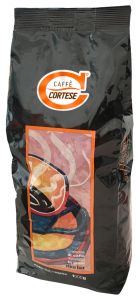
3-5 Workdays Article No. 10924
Aroma(s) : Chocolaty, Nutty
Article No. 10924
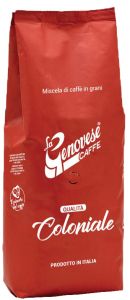
3-5 Workdays Article No. 10236
Aroma(s) : Chocolaty, Fruity
Article No. 10236
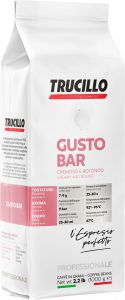
3-5 Workdays Article No. 10732
Aroma(s) : Chocolaty, Nutty
Article No. 10732
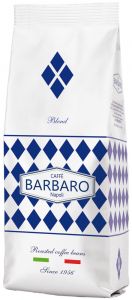
3-5 Workdays Article No. 10394
Aroma(s) : Nutty, Fruity
Article No. 10394

3-5 Workdays Article No. 10532
Aroma(s) : Chocolaty, Fruity
Article No. 10532
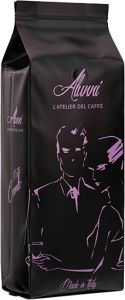
3-5 Workdays Article No. 10737
Aroma(s) : Nutty, Fruity
Article No. 10737
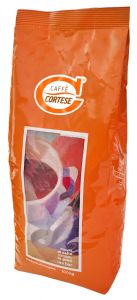
12-14
Workdays
Extended delivery time
Please note that if you purchase this item, you should expect a longer delivery time for your entire order. We cannot ship other items in your order, that are in stock, ahead of time.
Article No. 10922
Aroma(s) : Chocolaty, Nutty
Article No. 10922
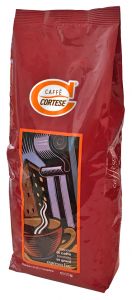
3-5 Workdays Article No. 10923
Aroma(s) : Nutty, Malty
Article No. 10923
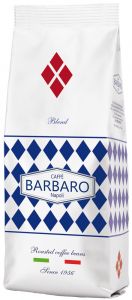
3-5 Workdays Article No. 10395
Aroma(s) : Chocolaty, Nutty
Article No. 10395
Espresso - Description of the Classic Italian Drink
Espresso – Small and aromatic
An espresso – in Italy un caffè – is a small cup with an aromatic beverage that briefly stops the surroundings for a moment of enjoyment. The taste is fantastic and intense, incomparable to anything else. Why does it taste so exceptional, and what makes a perfect espresso? Is it a special bean or the method of preparation? It's a mix of both that makes it so irresistible.
Why is it called Espresso?
Origin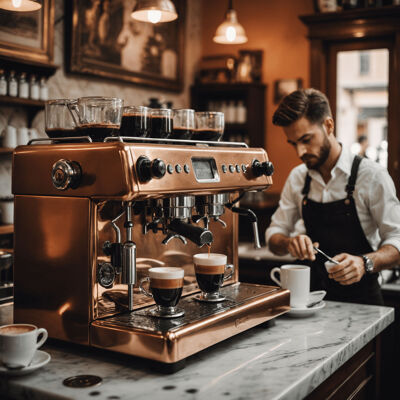 Espresso preparation became popular around 1900 in Milan (Italy) and began its triumphant march to other countries worldwide.
Espresso preparation became popular around 1900 in Milan (Italy) and began its triumphant march to other countries worldwide.
The word "espresso" comes from the Italian word espressamente, which means expressly (for someone). This name comes from the fact that an espresso is freshly prepared, expressly for a customer upon request. The second word in "espresso" is pressione, which means pressure. This part of the word indicates that espresso is prepared under pressure. It is often assumed that the word has something to do with "express," implying quick preparation, but this derivation of the name is incorrect. Therefore, the spelling expresso is wrong.
What is the roast of an espresso?
Bean and Roasting
The beans used are typically a blend of Robusta and Arabica beans; the typical ratio is 80% Robusta and 20% Arabica. This blend gives espresso coffee beans. The classic roast for an espresso is dark, which creates a heavier body and roasted flavors. Lighter roasts are now also available on the market, with a lighter body and a fruitier aroma, typically with a higher proportion of Arabica beans, which can go up to 100%. The further north in Italy the roaster is located, the lighter the roasts and the higher the proportion of Arabica beans. The further south the espresso beans come from, the darker the roast, and the proportion of Robusta is usually much higher, even up to 100%. Buying coffee online offers the opportunity to select a variety of types, each with its own story and flavor. In the coffee shop, there is an optimal variety for every taste and method of preparation.
Serving Method
Espresso is served in a pre-warmed cup with a capacity of 40 ml. In the cup there are 25 – 30 ml of espresso including crema.
An espresso is often consumed with sugar and served together with a small glass of water.
How can espresso be prepared?
There are different preparation methods. Regardless of the method used to prepare espresso, a good crema is essential. It is the hallmark of a quality espresso. The crema is a dense, golden-brown foam composed of oils, carbon dioxide, and proteins. To form it, a pressure of at least 6 bars is required. By examining the characteristics of the crema, one can deduce the freshness of the roast and the extraction.
Making Espresso at Home
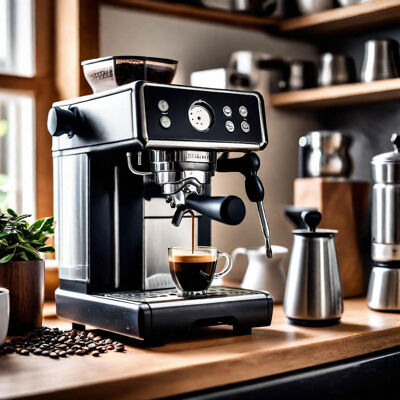 It is possible to make a delicious and flavorful espresso at home. Several methods exist that vary by the cost of the necessary equipment, the optimal grind size, and the taste of the prepared espresso.
It is possible to make a delicious and flavorful espresso at home. Several methods exist that vary by the cost of the necessary equipment, the optimal grind size, and the taste of the prepared espresso.
Before discussing preparation, you need to first buy the appropriate espresso grind from a coffee shop. When buying coffee online, the options are varied. In addition to roast intensity, the origin of the beans and fair prices for coffee producers are also important. Fair trade and organic coffee are possible choices here.
Espresso coffee should ideally be ground just before preparation to preserve its aroma. In an automatic machine, this step is integrated into the device. For preparation in a portafilter machine or moka pot, a coffee grinder is required.
Buying espresso is not difficult, but preparing it is? Is this statement true? NO!
Preparing espresso coffee is not rocket science, but a pleasure & an aromatic experience.
Espresso Preparation: Step-by-Step Guide
Introduction
Espresso is a delicious and concentrated coffee preparation that is rooted in Italian coffee culture. The following guide will help you prepare the perfect espresso.
Required Utensils
- Espresso machine or Moka pot
- Freshly ground espresso beans
- Tamper
- Scale (optional, for precise measurements)
- Cups
- Water
Step 1: Select Beans |
| - Choose high-quality espresso beans. Pay attention to the roast – perfect espresso beans are often dark roasted and should be fresh. |
Step 2: Grind Beans |
| - Grind the beans right before preparation. For an espresso, you should set a fine grind size that looks similar to sugar. You need about 18-20 grams of coffee for a double espresso. |
Step 3: Prepare Water |
| - Fill the water tank of the espresso machine with fresh, filtered water and make sure the machine is ready for operation. |
Step 4: Dose Coffee Grounds |
| - Weigh the freshly ground coffee (18-20 grams) and add it to the portafilter of your espresso machine. |
Step 5: Tamp Coffee Grounds |
|
- Use a tamper to compact the coffee grounds evenly and with relatively high pressure (approx. 15-20 kg). |
Step 6: Insert Portafilter |
| - Place the portafilter into the machine and turn it until it is securely seated. Place the cup under the machine's spout. |
Step 7: Extract Espresso |
| - Start the machine to extract the espresso. The ideal extraction time for a double espresso is between 25 and 30 seconds. Make sure a uniform, dark crema forms. |
Step 8: Serve and Enjoy |
| - Once the espresso is ready, serve it immediately in a pre-warmed cup. You can enjoy it plain or use it as a base for other coffee specialties such as cappuccino or latte macchiato. |
READING TIP: BARISTA Toni shares his tips for the Perfect Espresso Preparation
Tips for the Perfect Espresso
- Experiment with different beans and roast levels.
- Pay attention to the water temperature (ideal is 90-96 °C).
- Clean the espresso machine regularly for optimal taste.
- Keep the utensils carefully clean.
Conclusion
Preparing espresso requires some practice, but with this step-by-step guide, you will be able to create aromatic espresso that will impress you and your guests. Have fun experimenting!
How to Make an Espresso in a Portafilter?
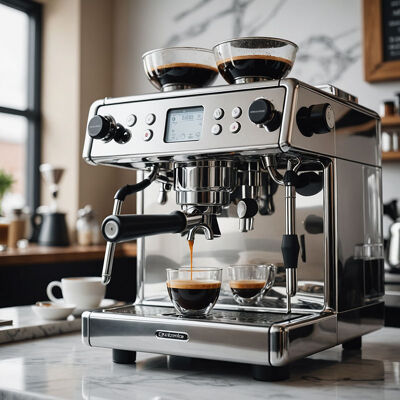 Portafilter Machine
Portafilter Machine
A portafilter machine can create an espresso just like the one from your last Italian vacation with a little practice.
With a portafilter machine, the amount of coffee grounds used is important, among other things. How many grams of espresso should fill a portafilter is the crucial question here. About 7 g of ground espresso coffee for a single espresso is considered a guideline. The grounds are firmly pressed with a so-called tamper. For preparation, the machine should have a pressure of at least 9 bar. This pressure is necessary for the beautiful crema that makes you dream of Bella Italia. During the brewing process, 25 – 30 ml of espresso should be produced in the cup within 25 – 30 seconds.
The preparation requires some practice and, compared to a fully automatic machine or a Moka pot, is associated with a slightly higher time expenditure. However, this form of preparation allows for more variation options in terms of the taste and intensity of the espresso.
Do you own a portafilter and are looking for the right beans?
Take a look at our roaster ➽ Coffee Portafilter Range.
Good Espresso in a Fully Automatic Machine?
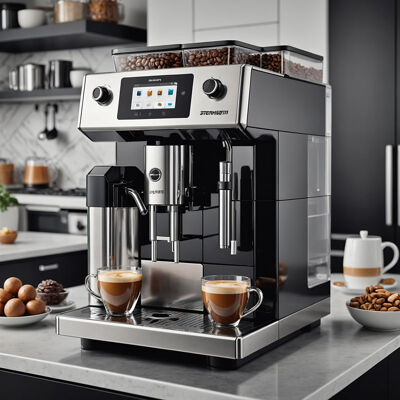 Fully Automatic Machine
Fully Automatic Machine
A fully automatic machine can prepare various coffee variations. It has a system that can grind the coffee beans. Therefore, no extra coffee grinder is necessary with a fully automatic machine. The water is brought to the required temperature in the machine using a flow heater, and then coffee is brewed. A fully automatic machine automatically compresses the freshly ground coffee in the machine. Pressure is also used during the brewing process. The machines achieve a pressure between 7.5 and 9 bar.
With fully automatic machines, variations can also be prepared at the push of a button, e.g., with milk foam. Practice is not necessary for operating a fully automatic machine, as everything works at the push of a button.
Another advantage of fully automatic machines is the ability to set different grind sizes and strengths to perfectly match the coffee to personal taste. The gentle preparation preserves the full aroma of the freshly ground beans, ensuring an intense and flavorful coffee experience.
Do you have a fully automatic machine and are looking for the right beans?
Take a look at our ➽ Coffee Beans for Fully Automatic Machines range.
Who Doesn't Know It. The Espresso from the Stovetop Pot
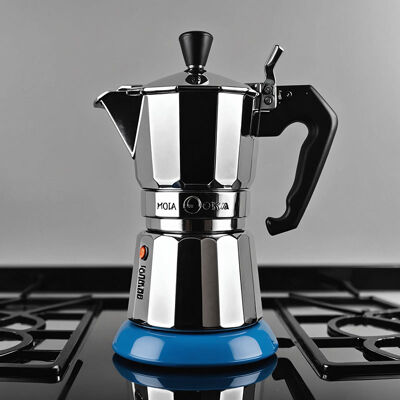 Moka Pot
Moka Pot
The small pots made of stainless steel or aluminum represent a cost-effective option for preparing coffee espresso at home. With the help of this pot, espresso can be prepared without a machine. The pot was invented in 1933 by Alfons Bialetti, who gave it the name Moka pot. Today, it is predominantly referred to as an espresso maker or espresso pot. The term Moka pot has nothing to do with the preparation of Turkish or Greek mocha. Hence the spelling with one "k".
Water is filled into the lower part of the pot up to just below the safety valve. For preparation, coarsely ground coffee is filled into the insert and then not pressed down. The small pot can be placed on a stovetop or gas cooker. With the help of the steam generated by the boiling water, pressure is created, which transports the espresso through the rising tube. However, the pressure in these small pots, at 1.5 bar, is too low for the formation of a crema.
Therefore, the end product of this preparation method is often not considered an espresso, as the characteristic crema is missing. However, there are currently Moka pots on the market that have a crema valve, with the help of which the espresso gets a crema.
Feeling like having a Moka? Take a look at our ➽ Moka Pot Range.
Barista Coffee at Home
Making espresso like a barista? With the right coffee beans, knowledge, and a few tricks, it's possible. Each of the preparation methods has its advantages and disadvantages. The method used depends on personal taste. The actual brewing time hardly differs between the preparation methods. They all require between 25 and 30 seconds.
No matter which method is used to prepare the espresso, various beverages can be prepared with it by adding other ingredients.
Would you like to know more about the different The different Espresso Preparation Methods? Then take a look here in the Coffee Knowledge.


